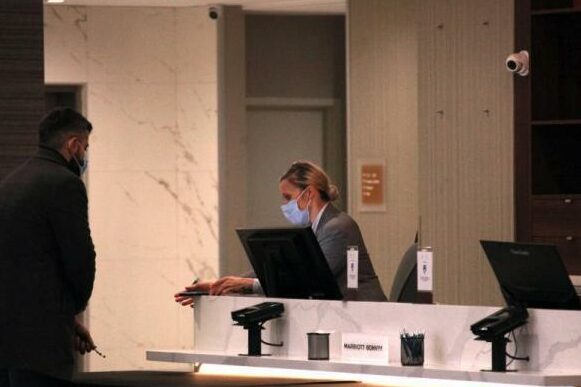February 23 The Canadian government will implement new regulations on entry and epidemic prevention from February 22. In principle, all passengers entering by international flights or land must undergo compulsory COVID-19 testing.
Air passengers must be tested at the airport and then quarantined at the official designated hotel in Canada for three days to wait for the test results. Passengers must reserve a room with the designated hotel before departure, and shall bear the related expenses of testing, accommodation, cleaning and safety. Even if the airport landing test is negative, the entrant still needs to complete 14 days of home quarantine.
At present, all international flights into Canada can only land at four international airports in Toronto, Montreal, Vancouver and Calgary. The isolation hotel chooses within 10 kilometers around the airport, and the fees vary from one to another.
On the same day, the reporter saw in several quarantine hotels near Toronto Pearson International Airport that the hotel posted obvious epidemic prevention requirements at the entrance. However, at present, the number of international flights has been greatly reduced, and the reporter has been waiting for a long time without seeing a large number of international flight passengers check in. A lobby staff member of the Alt Hotel said that the hotel had been fully prepared according to the epidemic prevention guidelines and the first day of work was smooth.
Since January 7 this year, Canada has required all air passengers over the age of 5 to board Canada on the basis of a negative COVID-19 test certificate 72 hours before departure. In addition, all passengers to Canada still need to fill in the isolation plan and other information through the officially designated mobile phone application before entering Canada.
From February 22, passengers entering Canada by land from the United States will receive self-service testing swabs at the port, which can be carried out at the port site or at its self-isolation place on the same day.
Since February 15, Canada has implemented new regulations at Canadian and American land ports, requiring immigrants to issue a certificate of coronavirus testing within 72 hours. Recently, the ban on “non-essential travel” between Canada and the United States has also been extended to March 21 this year.
Canada officially reminds the public that cross-border travel is not appropriate unless necessary. At the same time, it is illegal to falsely report information or violate epidemic prevention and isolation instructions.
With the second wave of the epidemic that began last fall now shows obvious signs of control, many parts of Canada are trying to relax restrictions and restart the economy. Ontario, which has the highest cumulative number of cases, lifted the “lockdown” in several regions on the 22nd, including York District, which borders Toronto.
On the same day, the reporter saw in Markham and other places where Chinese people live in York, that large shopping malls reopened, attracting a large number of people to go, but customers had to queue up to scan the code. There are also shops or restaurants who choose not to reopen for the time being and continue to wait and see. Toronto still has a “stay-at-home order”, but some cities in York are only one street away from Toronto. The discordant epidemic prevention steps have also caused some public opinion concerns.
The Canadian Public Health Agency said that the monitoring data showed that the epidemic was generally showing a steady downward trend. Show that community-based prevention and control measures are working. The department recently warned that mutant cases of COVID-19 have been found in all provinces of Canada, so epidemic prevention still needs to be strengthened, otherwise a third wave of the epidemic may occur in mid-March.
As of the evening of the 22nd, Canada had reported a total of about 849,500 cases, with a new 2,887 cases in a single day; about 7966 thousand recovered, 21,723 deaths and 31,164 active cases. End)



